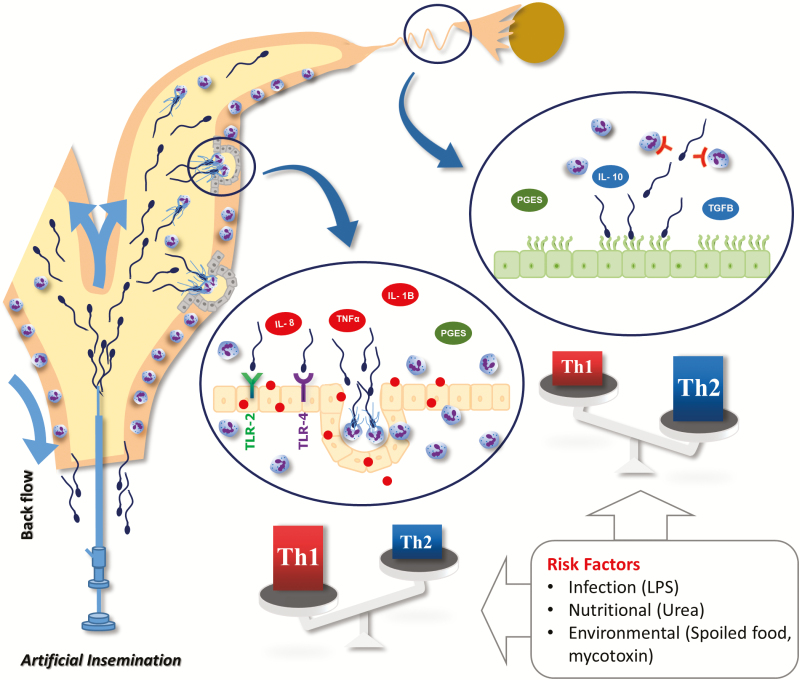Figure 2.
A schematic representation of the impact of bovine sperm interaction with the uterine and oviductal mucosa for physiological changes in the local immunity during the period from insemination until ovulation. Once active sperm arrive the uterine milieu, they glided over the endometrial surface epithelium until they encountered and entered uterine glands and consequently induced PMNs migration probably from the endometrial stroma. The sperm–uterine interaction induces pro-inflammatory responses through inducing the mRNA expressions of IL-8, TNFα, IL-1B, and PGES. In the oviduct during the pre-ovulatory stage, the sperm–BOEC binding stimulates epithelial cells to secrete high levels of PGE2 that strongly suppresses the PMN phagocytic behavior to sperm. Moreover, the sperm–BOEC binding induces the mRNA expressions of major anti-inflammatory cytokines, IL-10, and TGFB1 in BOEC. Overall, the sperm–uterine crosstalk induces pro-inflammatory responses which are required to remove excess and dead sperm as well as invading pathogens during insemination. Meanwhile, the sperm–BOEC binding induces an anti-inflammatory immune environment and suppresses PMN phagocytosis for sperm and induce a state of immune-tolerance that supports sperm survival until fertilization. This homeostatic balance can be easily disrupted by various risk factors such as infection (LPS), nutritional stress (urea), or environmental factors that induce food spoilage and contamination by mycotoxins.

